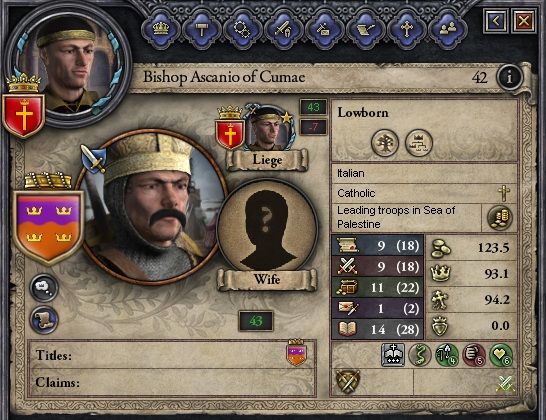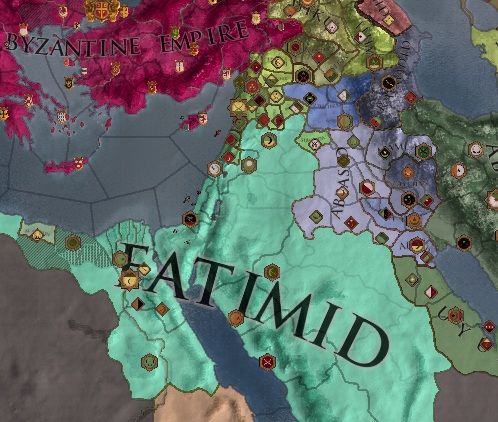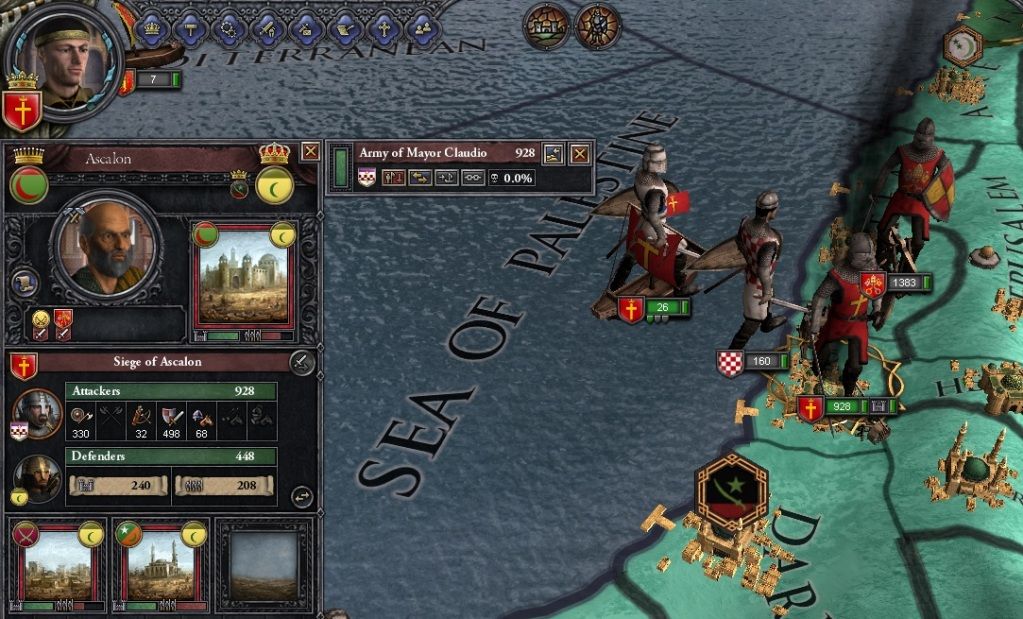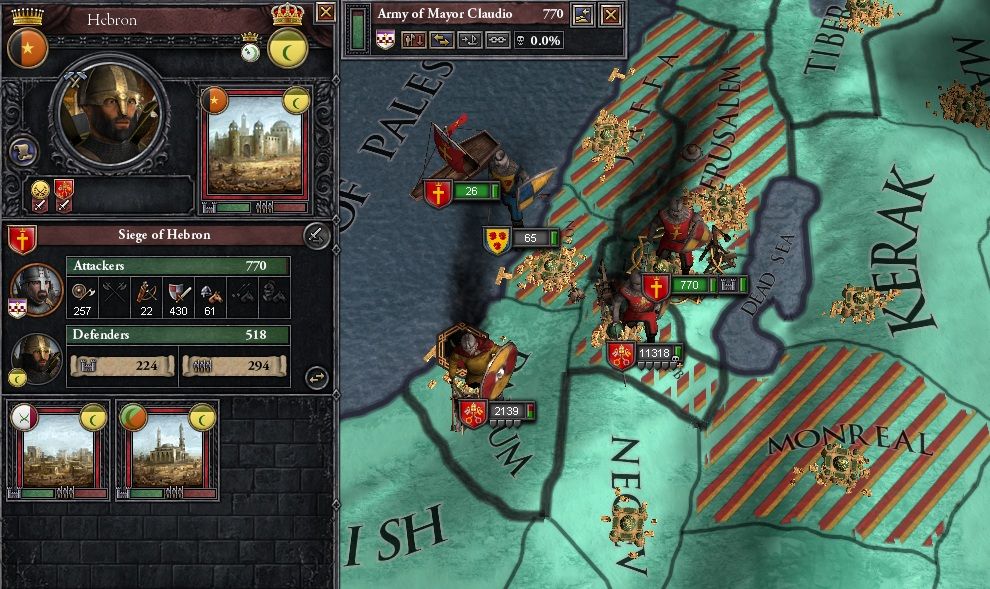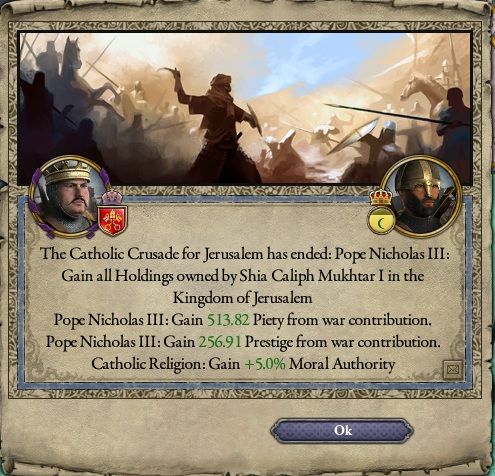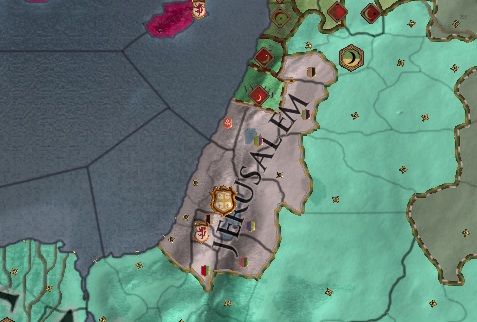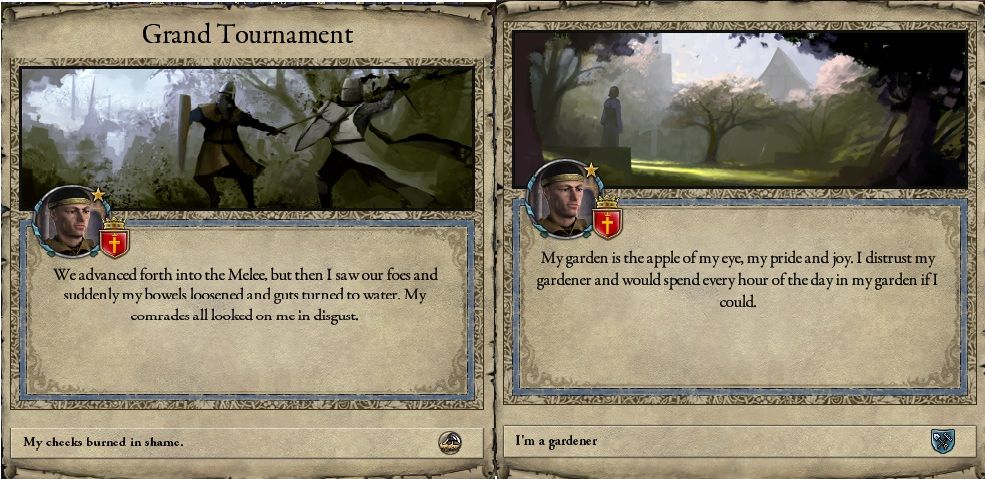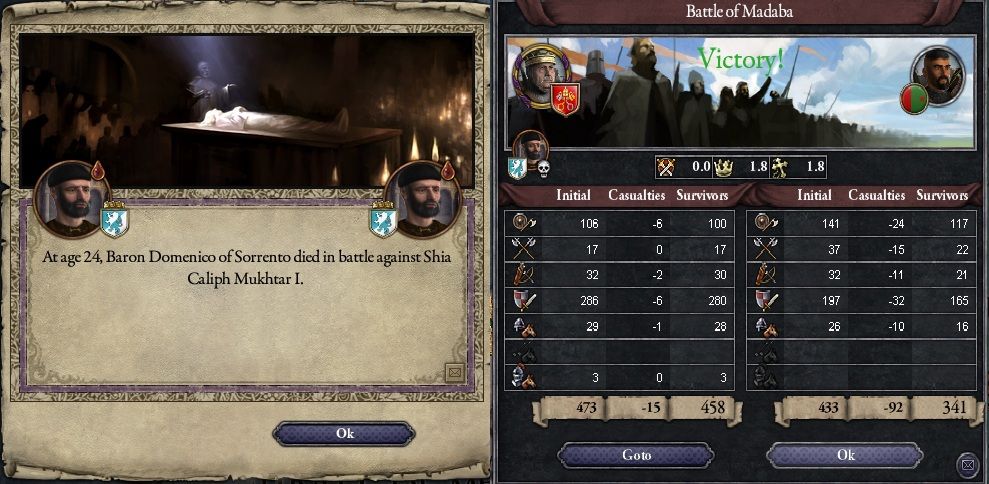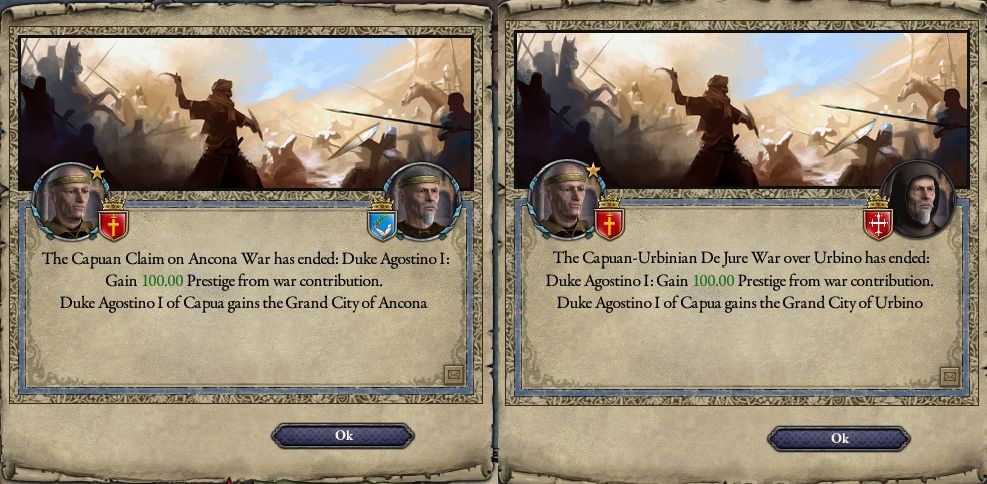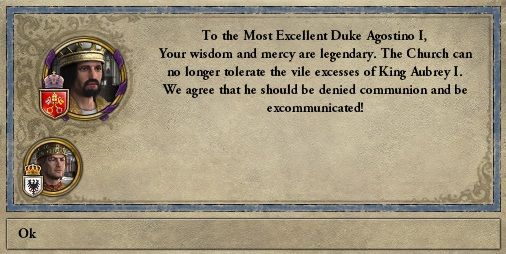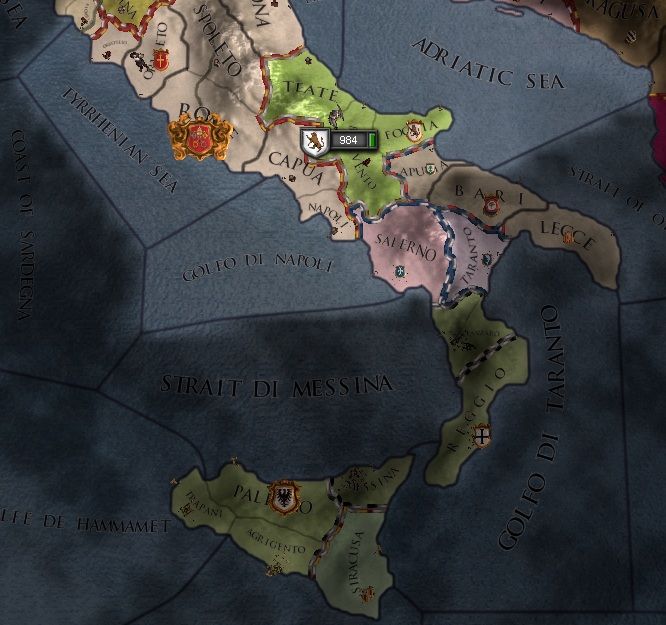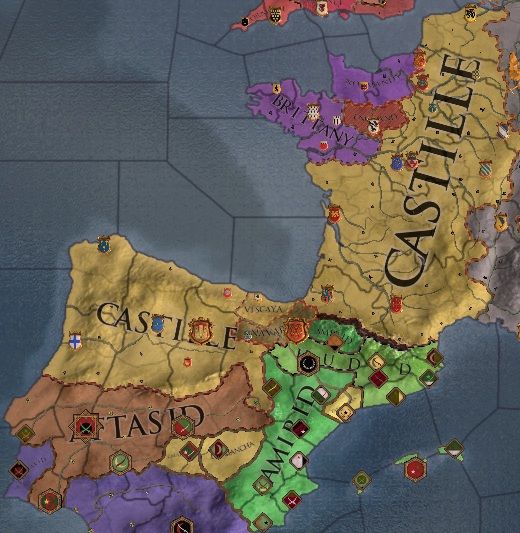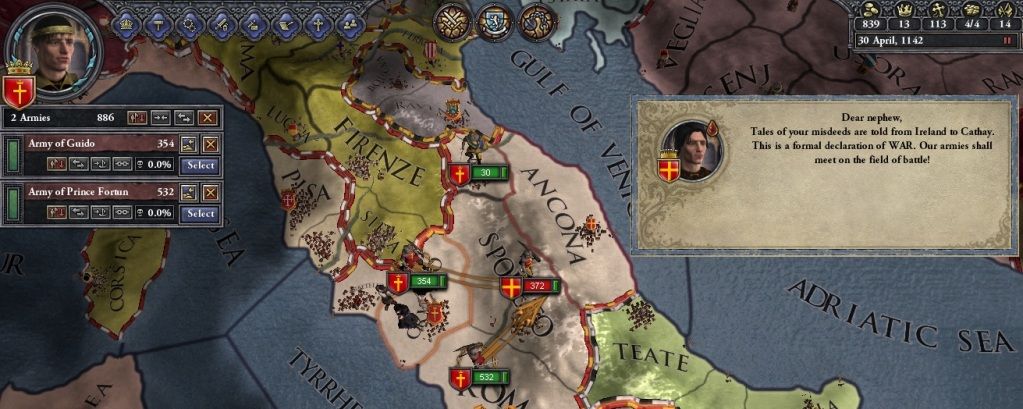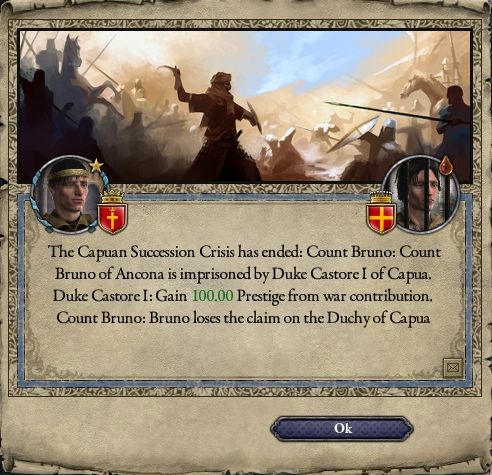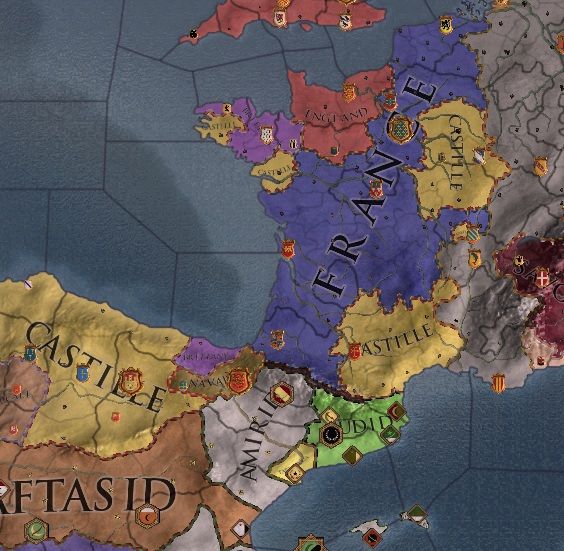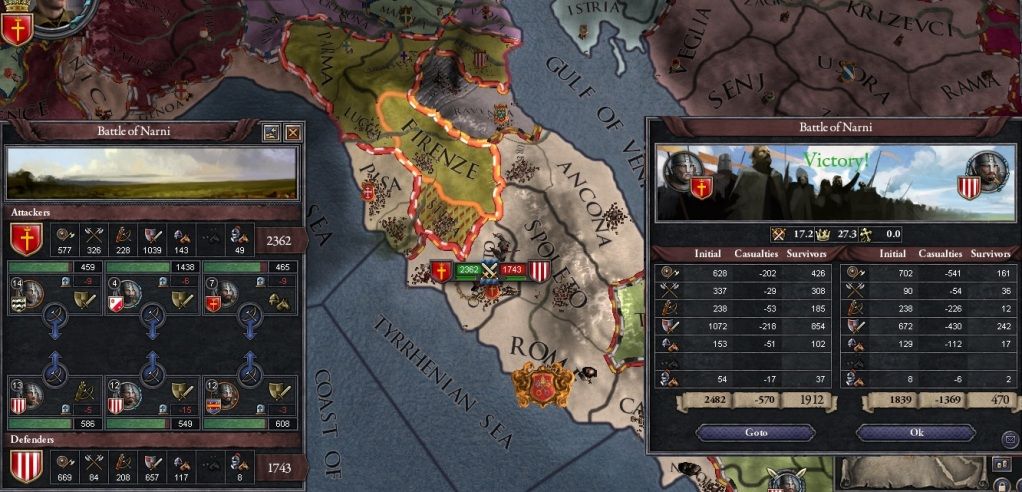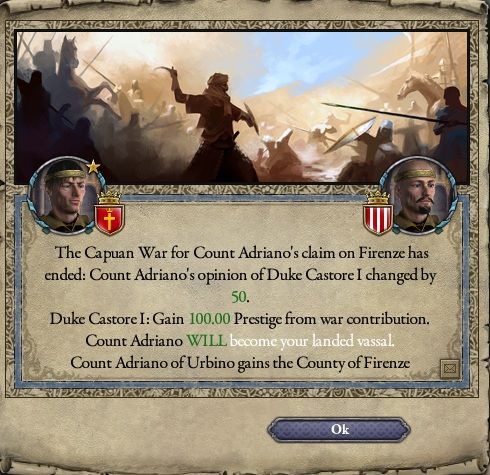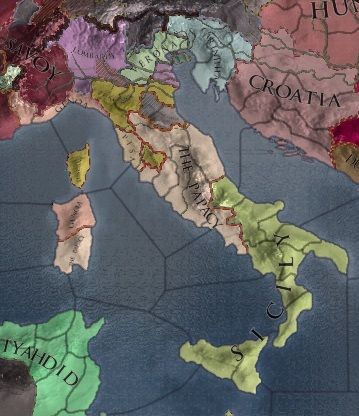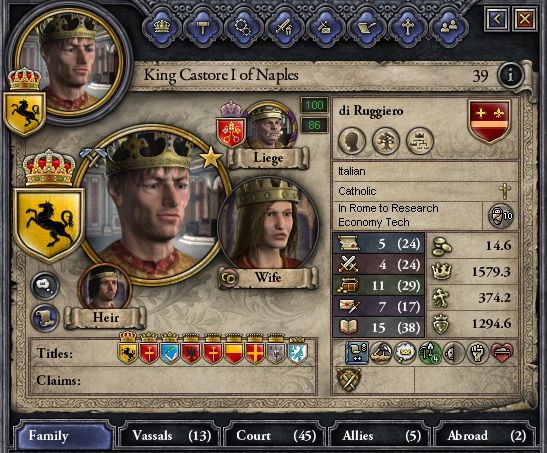March 1142 - October 1158
Agostino's Grandiose Grandson
Heirs and Claimants
The reign of Count Raniero, the first of the di Ruggiero dynasty to rise to power in Italy, transferred easily from himself to his only son, Agostino. His eldest child and first daughter Lucia, under Orvieto’s Agnatic-Cognatic laws, would have originally been the heiress of the County, with her younger sister Maria receiving a lesser inheritence due to the Gavelkind model of succession employed there. However, the birth of a single son meant that Agostino could easily and peacefully inherit all that his father owned, and Lucia offered only her support and loyalty to her younger brother.
When Agostino, having risen from Count of Orvieto to Duke of Capua and Ancona, died at the old age of 68, the situation proved far more complex and, in time, troublesome for the di Ruggiero family.
Agostino’s second child and eldeset son, Domenico, was the primary heir of his holdings. Seeking to protect the unity of his belongings, Agostino enforced a change in inheritence laws, changing to a model of Primogeniture, which ensured that Domenico would inherit all of his father’s titles. This created a great deal of bitterness, understandably, with his youngest child and only other son, Bruno, who would inherit nothing from his father but the County of Ancona, which was handed to him only when the growing demesne proved difficult for Duke Agostino to handle directly.
Further complicating the succession was the fact that Domenico was killed in July of 1123, while fighting in the failed defense of Jerusalem against Shia Caliph Mukhtar I. Upon his death, all of his claims were transferred, not to his younger brother Bruno, but to his infant son, Castore. Upon Agostino’s death, all of his titles passed immediately to his grandson, bypassing his second son entirely.
Not content to see his father’s power handed to a nephew six years his younger, Count Bruno of Ancona declared that he, not Castore, was the rightful heir to Agostino, and Ancona rose in rebellion against its new Duke. While Bruno commanded a levy of 372 men drawn from the local vassals, Castore commanded an army in excess of 900 loyal levies, including those of his kinsman, Count Comita di Ruggiero, the only son of Raniero’s first daughter, Lucia.
Near the middle of May, 1142, the two armies clashed near Assisi in the Papal County of Spoleto, and the battle, lasting a little over a week and a half, saw Bruno’s army cut down to a third of its original strength, while Castore’s army lost less than 75 men on its way to besieging Ancona.
On November 4, 1142, the rebels in Ancona surrendered, and Bruno was taken into custody by Castore’s Marshal, Rudolf von Nordheim. On the 17th of that same month, Bruno was brought bevore Duke Castore in Orvieto, along with another man found scheming to claim the Duchy of Ancona, Count Comita di Ruggiero of Urbino, the only son of Raniero’s first daughter, Lucia. The two men, bound in iron shackles and standing side by side before Castore’s throne, were given their fates -- both men would be sentence to a life’s term of imprisonment, to die in obscurity in Orvieto’s dungeon. For Comita, a man of 52 years, this would likely come sooner rather than later. For Bruno, however, who was still a young man at 26, this would prove a long and arduous sentence.
Castore the Builder
Inheriting a great sum of gold and a realm with a strong tax income, Castore put his resources to use quickly and often. While his predecessor, Duke Agostino I, had been aggressive in expanding his demesne outward, Castore’s particular sense of
ambition and
diligent personality were focused on improving the lands already under his control -- particularly, the ancestral County of Orvieto, the seat of power for the di Ruggiero family since the reign of his great grandfather, Raniero.
To that end, Castore invested thousands of gold into the investments of his personal demesne. To solidify the County of Orvieto as the central seat of the twin duchies, he ordered the construction of a new castle and associated barony -- to that end, construction of the new Barony of Baschi was completed in December of 1147, and given to his second son, Carlo di Ruggiero, while the Barony of Sorrento in Napoli, where Castore himself had ruled until his succession, was given to his eldest son and heir, Comita di Ruggiero.
He also invested a substantial amount of his resources into the catle at Orvieto itself. Under the heavy spending of Duke Castore, the whole castle was renovated, from its walls and tower to its quarters and stables, to its surrounding village expanded and grew more profitable and more strategically fortified.
To the Islands
While Duke Castore I's primary focus was on improving Orvieto from within, he was not adverse to his grandfather's preferred method of expansion by military conquest. When a fabricated claim gave him a case to attack the isolated independent Count of Cagliari on the island of Sardinia, Castore pressed his advantage and declared war. This would not, however, be a simple war on a single front against a weak opponent -- the Republic of Pisa, under Doge Gerhard II, took the opportunity to declare a second war against the Pope for control of Orbetello, after Agostino and the previous Pope had crushed one such attempt in the 1130's.
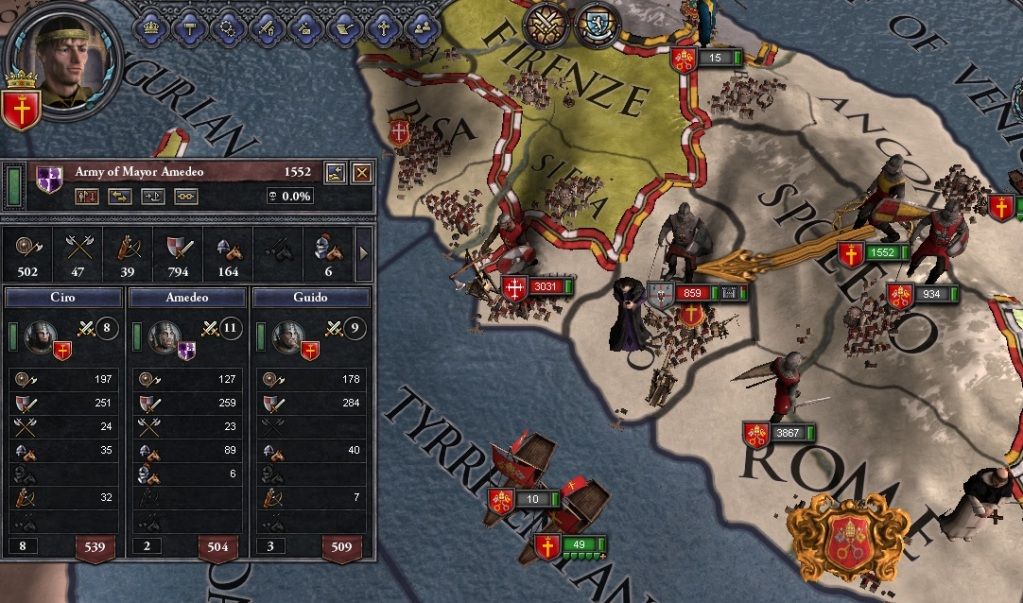
Although technically distinct conflicts, the two wars intersected early on when both of the Papacy's enemies attacked in the north. Not content to wait on his island to be assaulted, Count Berardo of Cagliari landed his army of approximately 800 troops on the shores of Orvieto, attacking Castore's capitol directly, while troops from Pisa numbering over 3,000 made their move against Orbetello. Each was engaged separately, with Duke Castore and Pope Gelasius both wielding numerically superior forces, and both finding swift victories against their respective opponents. When both armies united to press northward, the armies of Pisa and Cagliari were both obliterated within weeks of each other. At this point, the two forces split to pursue their individual victories.
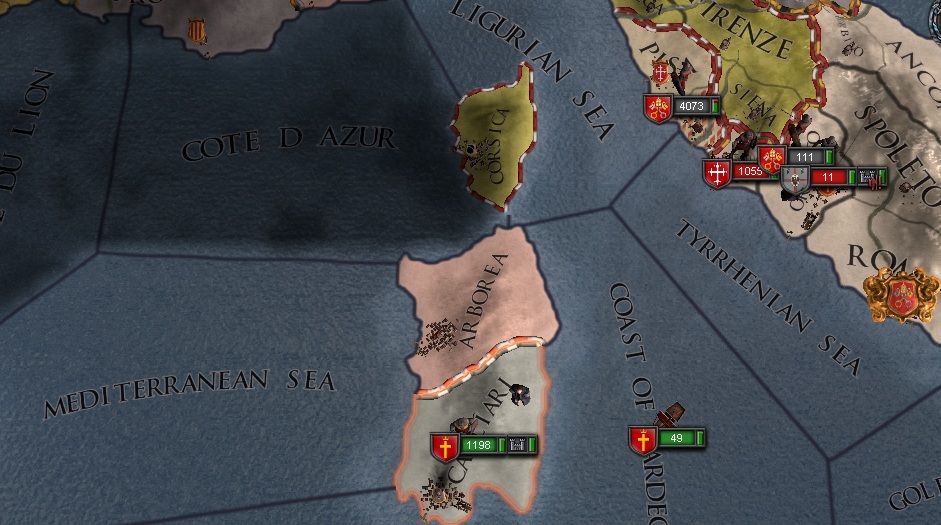
Pisa, wielding significant wealth for a small Republic, was able to raise emergency forces by hiring mercenaries, but Cagliari's resources were entirely depleted, leading to an easy siege for Castore's men. Pisa surrendered shortly thereafter, and after an unopposed siege, Cagliari was taken for Duke Castore's realm in October of 1158.



